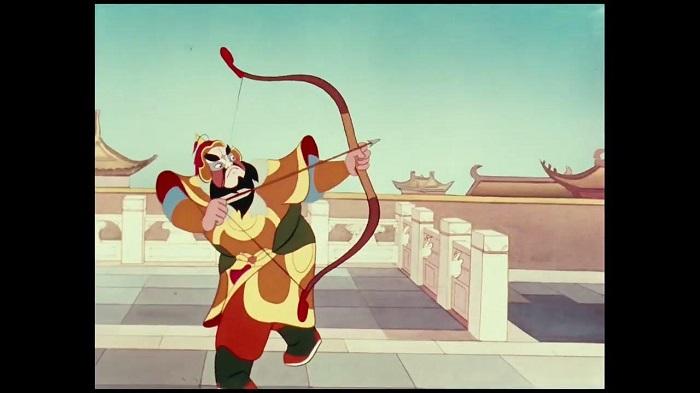Which 5 Animated Movies Laid the Foundation for Chinese Animated Movies?

Chinese animation has a rich and fascinating history. It is a field where traditional art, folklore, and modern techniques come together. While Hollywood and Japanese animations often get global attention, China has created landmark works that shaped its animation industry. These films not only entertained audiences but also influenced generations of animators.
For anyone exploring Chinese animated movies, understanding the foundational works is essential. The following five films set artistic, narrative, and technical standards for future Chinese animated productions.
Princess Iron Fan (1941)
The first feature-length breakthrough
"Princess Iron Fan" is recognized as China’s first full-length animated feature film. Directed by Wan Laiming and produced by the Wan brothers, it adapted a story from the classic novel Journey to the West. The story focuses on the Monkey King and his encounter with Princess Iron Fan, combining myth and adventure.
Why it matters
The film used traditional Chinese painting styles with cinematic techniques. Its hand-drawn sequences were detailed and expressive despite limited resources. "Princess Iron Fan" demonstrated that Chinese animators could create feature-length films that rivaled international standards. It inspired countless young artists and established a foundation for future Chinese animated movies.
Havoc in Heaven (1961–1964)
Mastery of style and storytelling
"Havoc in Heaven" is a two-part animated film depicting the Monkey King’s rebellion against the Jade Emperor. Directed by Wan Laiming, the film is praised for its fluid animation, intricate fight sequences, and vibrant colors. It draws heavily from Chinese opera and traditional painting techniques.
Why it matters
This film proved that Chinese animation could combine artistic elegance with strong narrative. It introduced audiences to Chinese mythology in an entertaining way. By setting high visual and storytelling standards, "Havoc in Heaven" became a reference for animators and helped shape the future of Chinese animated movies.
The Proud General (1956)
Storytelling with a moral purpose
"The Proud General," directed by Wan Laiming and Wan Guchan, tells the story of a military general who learns humility after his arrogance causes defeat. The film combines humor, traditional music, and folk-inspired visuals to tell its story.
Why it matters
This movie showed that animation could convey moral and social lessons. It demonstrated that films could be entertaining while teaching values. By blending culture, humor, and narrative depth, "The Proud General" influenced later Chinese animated movies, encouraging animators to explore meaningful storytelling.
A Thousand Miles Away (1960)
Innovation in technique and emotion
"A Thousand Miles Away" explores themes of loyalty, separation, and perseverance. The film combined hand-drawn animation with careful background art and expressive character design. Filmmakers experimented with perspective, lighting, and cinematic composition.
Why it matters
The film introduced emotional depth and narrative sophistication to Chinese animation. It showed that animated films could tell complex stories and explore dramatic themes. This technical and storytelling innovation laid groundwork for later Chinese animated movies, inspiring animators to take creative risks.
The Adventures of Nezha (1979)
Bringing mythology to modern audiences
"The Adventures of Nezha" tells the story of a young hero from Chinese mythology who fights evil forces. Directed by Yan Dingxian and Wang Shuchen, it features bright colors, dynamic action, and expressive characters. The film became a cultural phenomenon and a benchmark for quality animation.
Why it matters
This film successfully blended traditional storytelling with modern animation techniques. Its commercial and cultural success proved that Chinese audiences valued folklore-based narratives. "The Adventures of Nezha" inspired a generation of animators and became a model for modern Chinese animated movies that combine culture and entertainment.
How These Films Shaped Chinese Animation
These five films collectively set the foundation for Chinese animated movies. "Princess Iron Fan" showed that feature-length animation was possible. "Havoc in Heaven" demonstrated artistic excellence. "The Proud General" introduced moral storytelling. "A Thousand Miles Away" experimented with narrative and cinematic techniques. "The Adventures of Nezha" proved the commercial potential of mythology-based stories.
Together, these works established the artistic, technical, and narrative principles that continue to guide Chinese animators today. Modern films such as White Snake, Big Fish & Begonia, and Ne Zha owe their creativity and success to the standards set by these pioneering works.
Conclusion
Exploring the history of Chinese animated movies reveals a tradition of creativity, culture, and technical innovation. These five films were not just entertainment; they were cultural milestones. They combined traditional art, folklore, and storytelling techniques with cutting-edge animation for their time.
By studying these foundational films, audiences and animators can appreciate the depth and legacy of Chinese animation. They remind us that animation is not just a medium for fun—it is a form of cultural expression, capable of shaping generations and telling stories that resonate for decades.
Chinese animated movies continue to grow in ambition and style, but these five classics remain the pillars on which the entire industry stands.
- Art
- Causes
- Crafts
- Dance
- Drinks
- Film
- Fitness
- Food
- Juegos
- Gardening
- Health
- Home
- Literature
- Music
- Networking
- Other
- Party
- Religion
- Shopping
- Sports
- Theater
- Wellness



